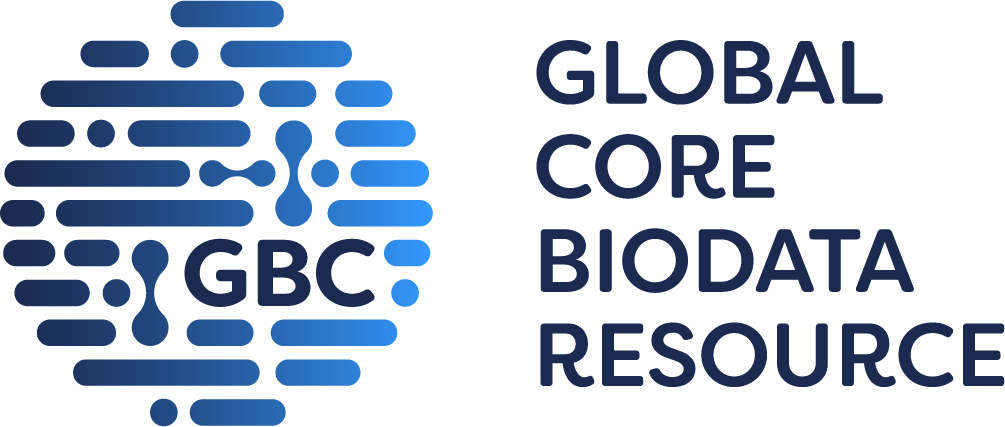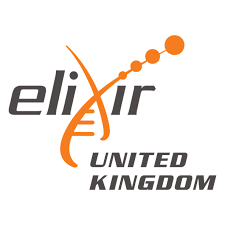
LRRK2-IN-1 [Ligand Id: 9396] activity data from GtoPdb and ChEMBL
Click here for a description of the charts and data table
Please tell us if you are using this feature and what you think!
| ChEMBL ligand: CHEMBL2012582 |
|---|
There should be some charts here, you may need to enable JavaScript!
|
There should be some charts here, you may need to enable JavaScript!
|
There should be some charts here, you may need to enable JavaScript!
|
| DB | Assay description | Assay Type | Standard value | Standard parameter | Original value | Original units | Original parameter | Reference |
|---|---|---|---|---|---|---|---|---|
| bromodomain containing 4/Bromodomain-containing protein 4 in Human (target type: SINGLE PROTEIN) [ChEMBL: CHEMBL1163125] [GtoPdb: 1945] [UniProtKB: O60885] | ||||||||
| ChEMBL | Binding affinity to recombinant human N-terminal hexaHis-tagged BRD4 expressed in Escherichia coli BL21 (DE3) cells by ITC analysis | B | 6.71 | pKd | 194 | nM | Kd | J Med Chem (2021) 64: 15772-15786 [PMID:34710325] |
| ChEMBL | Binding affinity to recombinant human N-terminal hexaHis-tagged BRD4 expressed in Escherichia coli BL21 (DE3) cells by MST assay | B | 7.16 | pKd | 69 | nM | Kd | J Med Chem (2021) 64: 15772-15786 [PMID:34710325] |
| ChEMBL | Binding affinity to recombinant human N-terminal hexaHis-tagged BRD4 expressed in Escherichia coli BL21 (DE3) cells by qPCR assay | B | 7.18 | pKd | 66 | nM | Kd | J Med Chem (2021) 64: 15772-15786 [PMID:34710325] |
| bromodomain testis associated/Bromodomain testis-specific protein in Human (target type: SINGLE PROTEIN) [ChEMBL: CHEMBL1795185] [GtoPdb: 2729] [UniProtKB: Q58F21] | ||||||||
| ChEMBL | Binding affinity to recombinant human N-terminal hexaHis-tagged BRDT expressed in Escherichia coli BL21 (DE3) cells by ITC analysis | B | 5.77 | pKd | 1700 | nM | Kd | J Med Chem (2021) 64: 15772-15786 [PMID:34710325] |
| ChEMBL | Binding affinity to recombinant human N-terminal hexaHis-tagged BRDT expressed in Escherichia coli BL21 (DE3) cells by MST assay | B | 6.15 | pKd | 700 | nM | Kd | J Med Chem (2021) 64: 15772-15786 [PMID:34710325] |
| ChEMBL | Binding affinity to recombinant human N-terminal hexaHis-tagged BRDT expressed in Escherichia coli BL21 (DE3) cells by qPCR assay | B | 6.41 | pKd | 390 | nM | Kd | J Med Chem (2021) 64: 15772-15786 [PMID:34710325] |
| leucine rich repeat kinase 2/Leucine-rich repeat serine/threonine-protein kinase 2 in Human (target type: SINGLE PROTEIN) [ChEMBL: CHEMBL1075104] [GtoPdb: 2059] [UniProtKB: Q5S007] | ||||||||
| GtoPdb | Biochemical assay dissociation constant. | - | 8.22 | pKi | 6 | nM | Ki | Bioorg Med Chem Lett (2013) 23: 3690-6 [PMID:23721803] |
| ChEMBL | Inhibition of GST-tagged LRRK2 (1326 to 2527 amino acids) G2019S mutant (unknown origin) | B | 8.22 | pKi | 6 | nM | Ki | Bioorg Med Chem Lett (2013) 23: 3690-3696 [PMID:23721803] |
| ChEMBL | Inhibition of LRRK2 G2019S and A2016T mutant expressed in HEK293 cells using nictide and ATP as substrate | B | 5.51 | pIC50 | 3080 | nM | IC50 | Bioorg Med Chem Lett (2012) 22: 1864-1869 [PMID:22335897] |
| ChEMBL | Inhibition of LRRK2 A2016T mutant expressed in HEK293 cells using nictide and ATP as substrate | B | 5.61 | pIC50 | 2450 | nM | IC50 | Bioorg Med Chem Lett (2012) 22: 1864-1869 [PMID:22335897] |
| ChEMBL | Inhibition of recombinant catalytic human GST-tagged LLRK2 G2019S mutant (970 to 2527 residues) expressed in baculovirus expression system using LRRKtide as substrate after 1 hr by alexaFluor-ADP-based FRET assay | B | 7.7 | pIC50 | 20 | nM | IC50 | Eur J Med Chem (2017) 138: 328-342 [PMID:28688273] |
| ChEMBL | Inhibition of recombinant catalytic human GST-tagged LLRK2 (970 to 2527 residues) expressed in baculovirus expression system using LRRKtide as substrate after 1 hr by alexaFluor-ADP-based FRET assay | B | 7.7 | pIC50 | 20 | nM | IC50 | Eur J Med Chem (2017) 138: 328-342 [PMID:28688273] |
| ChEMBL | Inhibition of wild-type LRRK2 expressed in HEK293 cells using nictide and [gamma32]ATP as substrate | B | 7.89 | pIC50 | 13 | nM | IC50 | Bioorg Med Chem Lett (2012) 22: 1864-1869 [PMID:22335897] |
| ChEMBL | Inhibition of LRRK2 (1326 to 2527 residues) in HEK293 cell lysate measured after 15 mins in presence of ATP | B | 7.89 | pIC50 | 13 | nM | IC50 | Eur J Med Chem (2023) 256: 115475-115475 [PMID:37201428] |
| ChEMBL | Inhibition of wild type GST-tagged LRRK2 ((1326 to 2517 amino acids) (unknown origin) | B | 7.89 | pIC50 | 13 | nM | IC50 | Bioorg Med Chem Lett (2013) 23: 3690-3696 [PMID:23721803] |
| ChEMBL | Inhibition of wild-type GST-tagged LRRK2 (1326 to 2527 aa)(unknown origin) stably expressed in HEK293 cell lysate using [gamma-32P] after 15 mins by Cerenkov counting method | B | 7.89 | pIC50 | 13 | nM | IC50 | Eur J Med Chem (2015) 95: 29-34 [PMID:25791676] |
| GtoPdb | With 0.1 mM ATP in the assay. | - | 7.89 | pIC50 | 13 | nM | IC50 | Nat Chem Biol (2011) 7: 203-5 [PMID:21378983] |
| ChEMBL | Inhibition of LRRK2 G2019S mutant (1326 to 252 aa) (unknown origin) stably expressed in HEK293 cell lysate using [gamma-32P] after 15 mins by Cerenkov counting method | B | 8.1 | pIC50 | 7.9 | nM | IC50 | Eur J Med Chem (2015) 95: 29-34 [PMID:25791676] |
| ChEMBL | Inhibition of LRRK2 (unknown origin) | B | 8.22 | pIC50 | 6 | nM | IC50 | J Med Chem (2015) 58: 6733-6746 [PMID:25915084] |
| ChEMBL | Inhibition of GST-tagged LRRK2 (1326 to 2527 amino acids) G2019S mutant (unknown origin) | B | 8.22 | pIC50 | 6 | nM | IC50 | Bioorg Med Chem Lett (2013) 23: 3690-3696 [PMID:23721803] |
| ChEMBL | Inhibition of GST-LRRK2 (1326 to 2527 residues) G2019S mutant (unknown origin) expressed in HEK293 cells incubated for 15 mins by cerenkov counting method | B | 8.22 | pIC50 | 6 | nM | IC50 | J Med Chem (2020) 63: 11330-11361 [PMID:32352776] |
| ChEMBL | Inhibition of LRRK2 G2019S mutant expressed in HEK293 cells using nictide and ATP as substrate | B | 8.22 | pIC50 | 6 | nM | IC50 | Bioorg Med Chem Lett (2012) 22: 1864-1869 [PMID:22335897] |
| ChEMBL | Inhibition of LRRK2 G2019S mutant in HEK293 cell lysate measured after 15 mins in presence of ATP | B | 8.22 | pIC50 | 6 | nM | IC50 | Eur J Med Chem (2023) 256: 115475-115475 [PMID:37201428] |
| ChEMBL | Inhibition of recombinant LRRK2 (unknown origin) using gamma-32P-ATP assessed as LRRKtide substrate phosphorylation level by autoradiography | B | 8.46 | pIC50 | 3.5 | nM | IC50 | Bioorg Med Chem Lett (2014) 24: 4630-4637 [PMID:25219901] |
ChEMBL data shown on this page come from version 35:
Zdrazil B, Felix E, Hunter F, Manners EJ, Blackshaw J, Corbett S, de Veij M, Ioannidis H, Lopez DM, Mosquera JF, Magarinos MP, Bosc N, Arcila R, Kizilören T, Gaulton A, Bento AP, Adasme MF, Monecke P, Landrum GA, Leach AR. (2024). The ChEMBL Database in 2023: a drug discovery platform spanning multiple bioactivity data types and time periods. Nucleic Acids Res., 52(D1). DOI: 10.1093/nar/gkad1004. [EPMCID:10767899] [PMID:37933841]
Davies M, Nowotka M, Papadatos G, Dedman N, Gaulton A, Atkinson F, Bellis L, Overington JP. (2015) 'ChEMBL web services: streamlining access to drug discovery data and utilities.' Nucleic Acids Res., 43(W1). DOI: 10.1093/nar/gkv352. [EPMCID:25883136]







